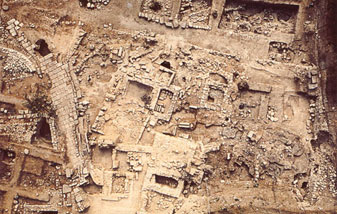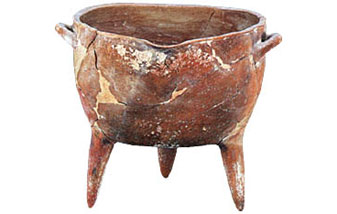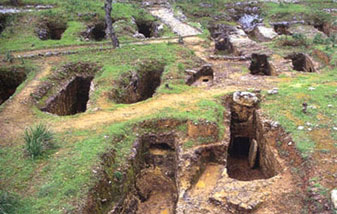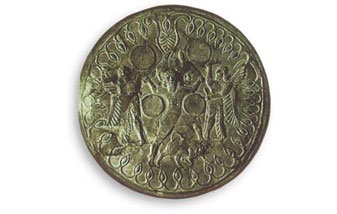RETHYMNON TRAVEL GUIDE

Please note
My Reservation
Modal title
Please note
Rethymnon Ferries
See what our customers say about us!
Reviews
4.8 stars
1409 reviews

YOUR PERSONAL
FERRY BOOKING AGENT
Each of our customers is assigned a personal Ferry Booking Agent who speaks their language and replies within 3 working hours. Your agent is available to you before, during and after your trip.
Greekferries Club Bonus Per Mile
Collect 'miles' every time you travel by ferry, regardless of the ferry company you travel with!
Redeem your Miles and get discounts and FREE tickets!
Economy Car Rentals
in RethymnonOffers all year round!
Rent a Car
Rethymno Ferries Crete Island
Ships and Ferries to Rethymno in the Crete IslandTravel Information for ferries to Rethymno. Rethymno - Crete Island
RETHYMNO > ARCHAEOLOGY
ARCHAEOLOGYAncient Eleftherna

The ancient town of Eleftherna is located at an altitude of 380 m on the northern slopes of Psilotitis, 30 km south of Rethymnon. According to folklore its name derives from Eleftherea, one of the Kourites, or from the surname of Dimitris Elefthous.
During excavations in 1929 and 1985 relics were found dating from the Geometric to the first Byzantium periods with evidence of use in the pre and early Minoan times.
Apodoulou

At Tournes, on the western slopes of Psiloriti, are ruins of an ancient palace of 1950-1700 BC. Its location is in the Amariou valley guarding the route to the Messaras plain. Excavations have revealed three groups of buildings. Some graves dating to 1380-1200 BC have been found close by.
The first excavations were led by A. Marinato in 1930 and later during WWII by the German Archaeological Institute led by E Kirsten. From 1985 onwards there have been continued excavations of the area.
Armenon Necropolis

The formation of this cemetery shows an organised design with carved tombs and roads with the exception of tomb 200, which is vaulted. The tombs were marked with rocks, some built in pyramids others flat. They were family tombs with many remains in sarcophagi. Digs discovered ceramics, weapons, tools and jewellery revealing information about their art, religion and community of the age.
In 1969, two urns were handed in to Rethymnon Archaeological Museums by two students which they had found in Prinokefalo. Later excavations revealed that there was a larger cemetery of the late-Minoan period; to date 220 tombs have been found.
Ideon Andron

The Voskopoulas Cave is located on the Nidas plateau at an altitude of 1,538 m and is where Dias or Zeus, the father of the gods was born. His mother, Rhea, hid her new born son in the cave to save him from his father, Chronos, who devoured his children because he was afraid that one of them would usurp his power. Hidden in the cave he was fed milk by the goat, Amalthea, and when he cried the Kourites thumped their copper shields to disguise his crying sounds. The combination of legend and fact made this cave and Ideon Andron important religious sites in ancient, Minoan and Roman times.
Excavations started in 1885 by Federico Halbherr revealed the holiness of the cave.
Axos
The village of Axos is on the site of the ancient town of Oaxos, an important town of ancient Crete that existed from the late-Minoan period to after Roman times. Excavations that began in 1899 have found the ruins of the temple of Aphrodite, the governor’s office, graves, Minoan shells, clay urns, drawings and many figurines of a naked woman regarded as the goddess of reproduction. A portion of its wall was found located on higher slopes above the village. The excavations also found ruins dating back to the classical Hellenic period on which other buildings were later erected, mainly Byzantium churches.
Lappa
The ancient town of Lappa was found during excavations in and around the village of Argyroupoli. Ancient Lappa has been dated to the Geometric and Roman times. It was destroyed in 68 B.C. and a better town was rebuilt in 31 B.C., which had hot springs and its own coinage. In recent years there have been discoveries of a cemetery of Roman times at the site of the Five Vestal Virgins. Finds include two marble statues and a copper figurine.
Monastiraki
The village of Monastiraki is located in the valley of Amariou 38 km from Rethymnon, where a group of buildings have been discovered dating back to about 2000 B.C. The ruins witness a major catastrophe, possibly an earthquake or fire, around 1700 B.C. The building complex consists of storage rooms, areas of worship and two administrative rooms where many clay seals were found indicating that this was the seat of local power.
The excavations were commenced by the German Archaeological Institute during WWII and from 1980 were continued by the University of Crete.

Why book with Greekferries Club
Simple. We are here for you every step of the way.

The Greekferries
Booking Engine
Enter your ferry routes and travel dates and we guide you from there. Find all schedules, availability and prices and book your ferry tickets in three simple steps!

The Best Ferry Ticket Price
We include all the discounts you are entitled to. You don’t have to do any research!

The Secure Payments
Our payment gateway is fully compliant with the PSD2 SCA / EMV 3-D Secure 2.0 directives and guidelines.

The Chat Service
If you encounter any difficulty or simply have a question, use the chat service in our booking engine and we’ll be happy to help!

YOUR Personal
Ferry Booking Expert
Whether you complete your booking online or ask for our assistance, you will be paired with an experienced agent who speaks your language fluently.